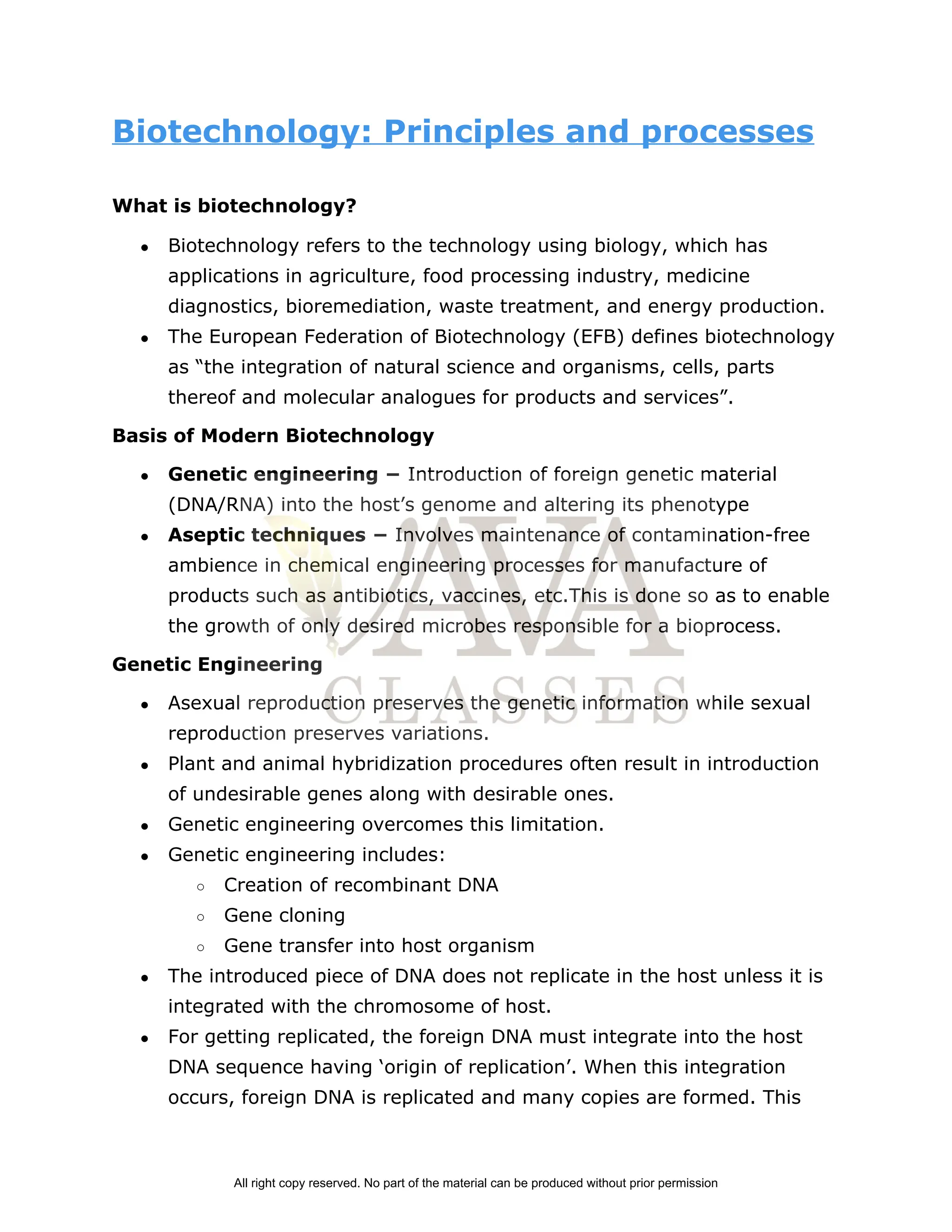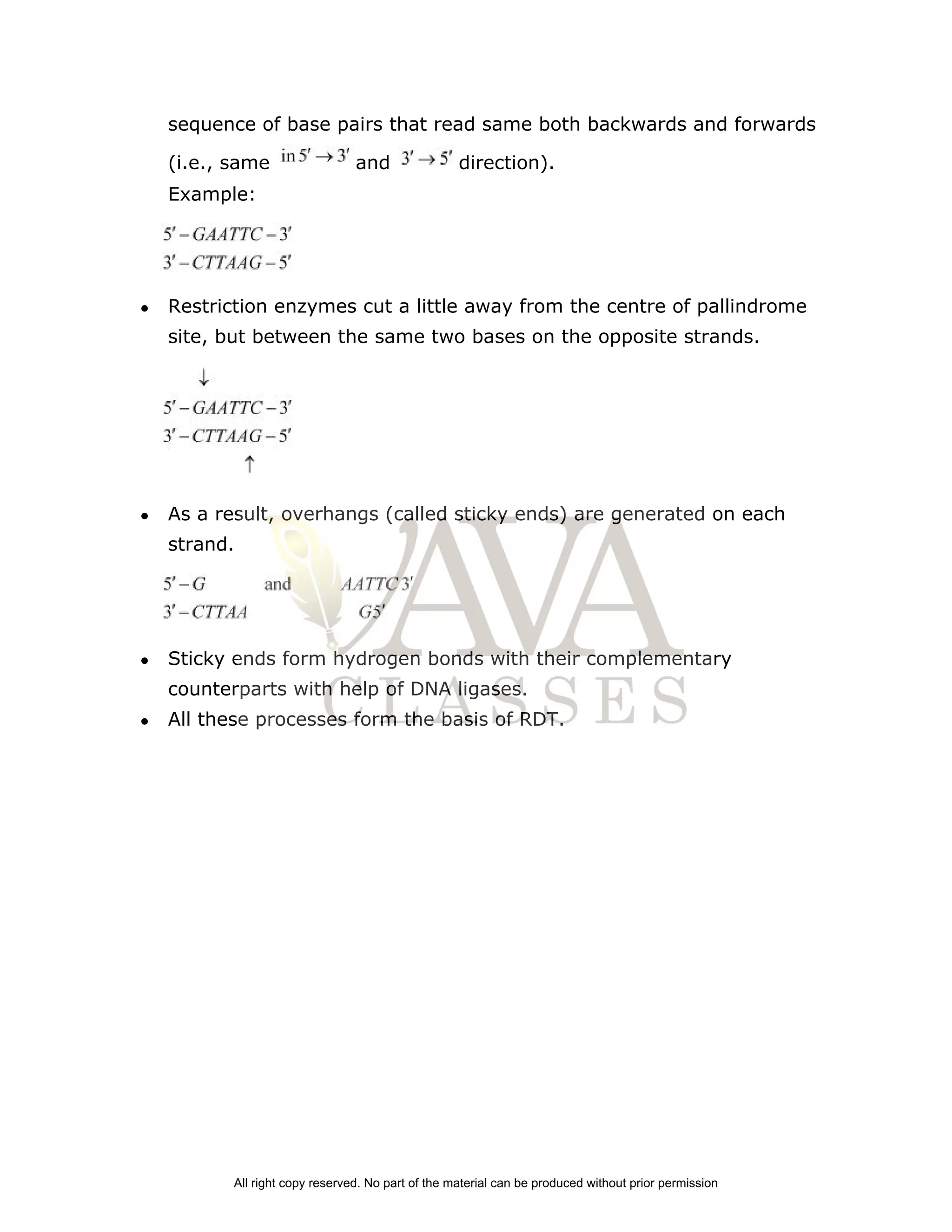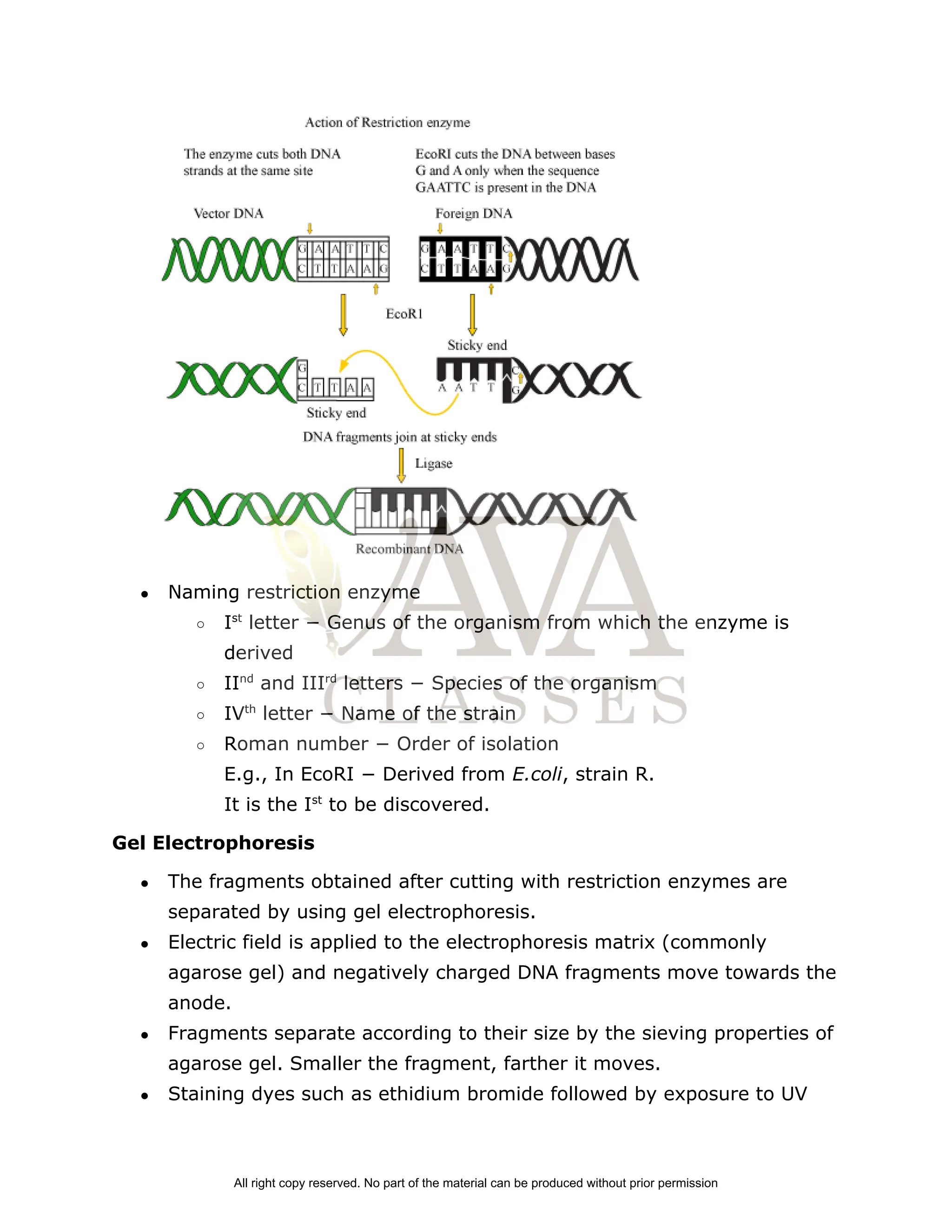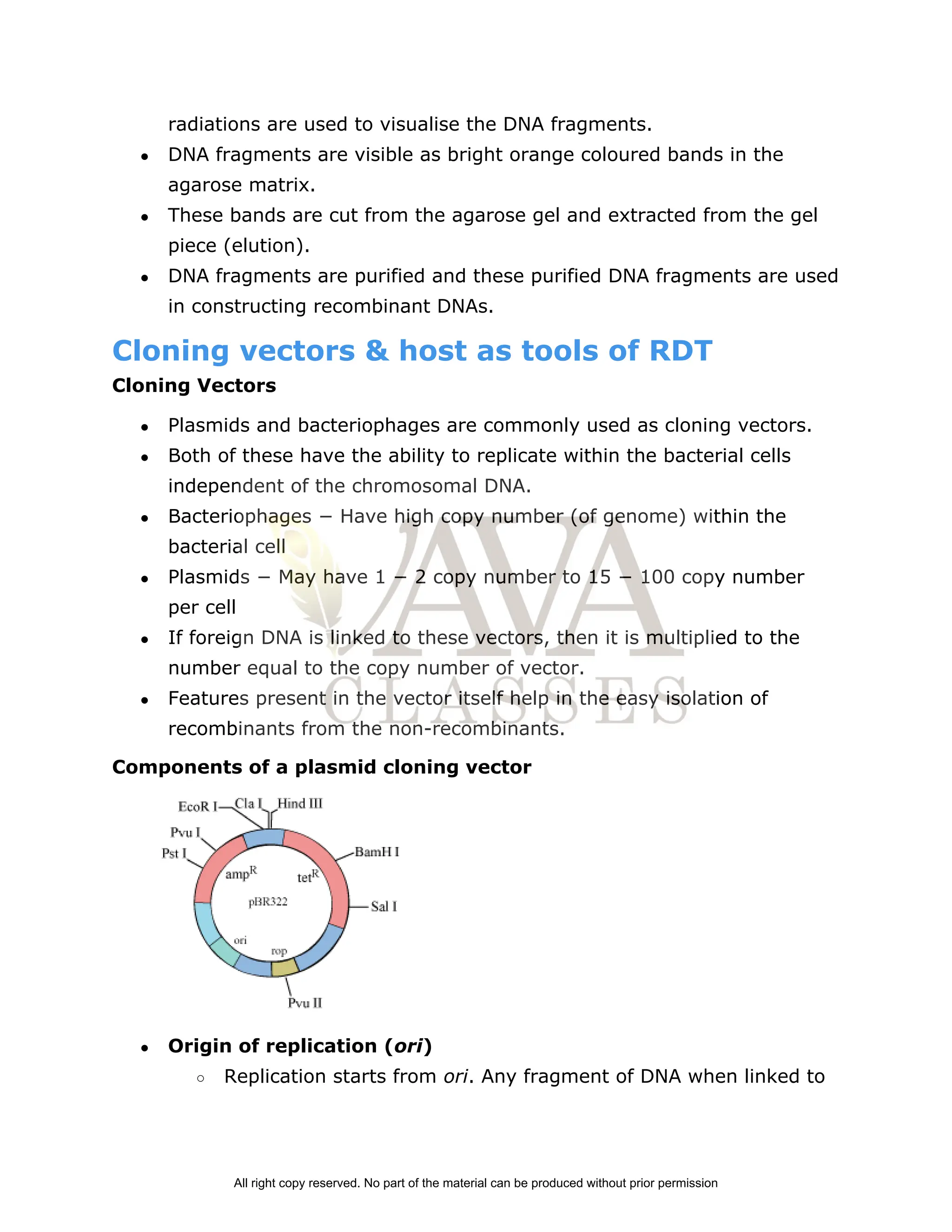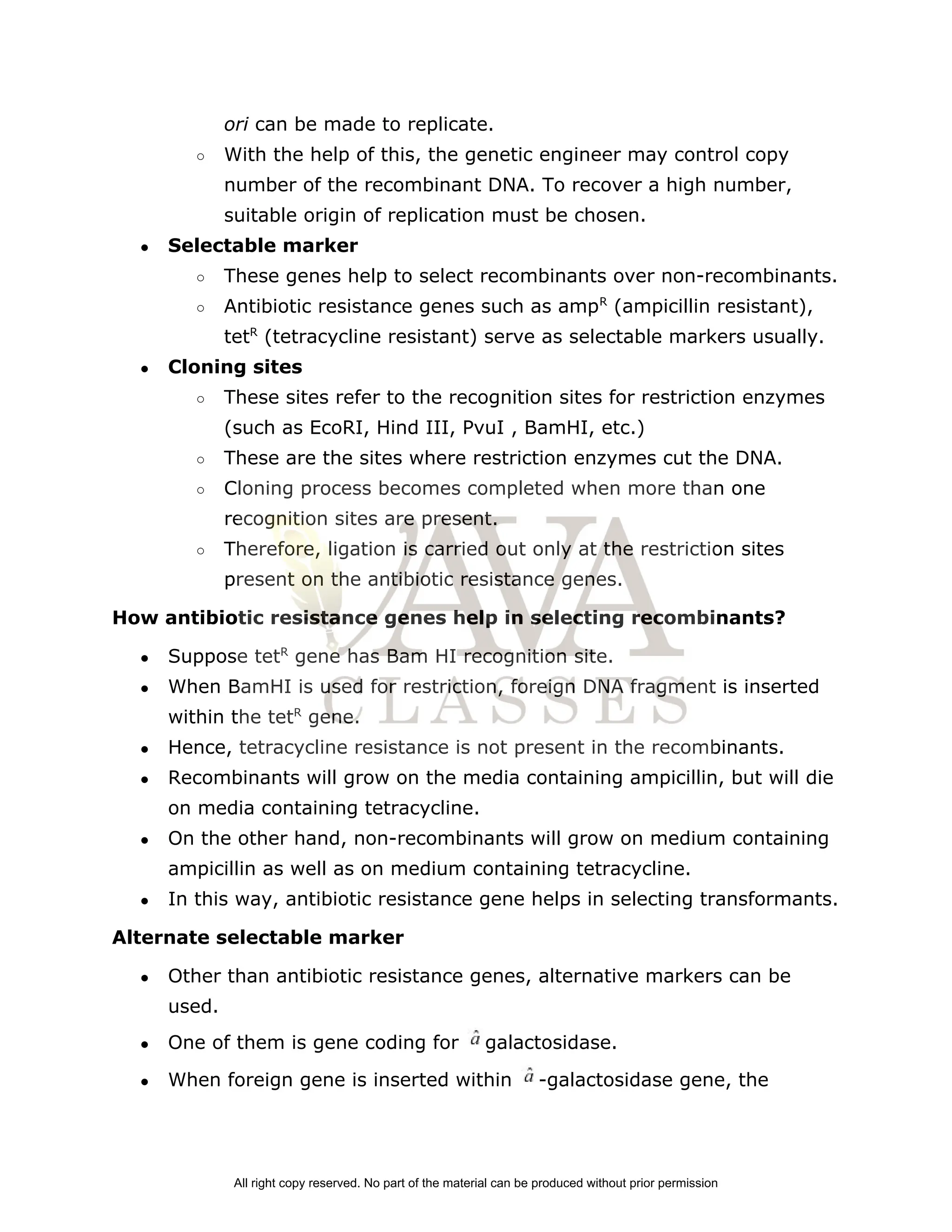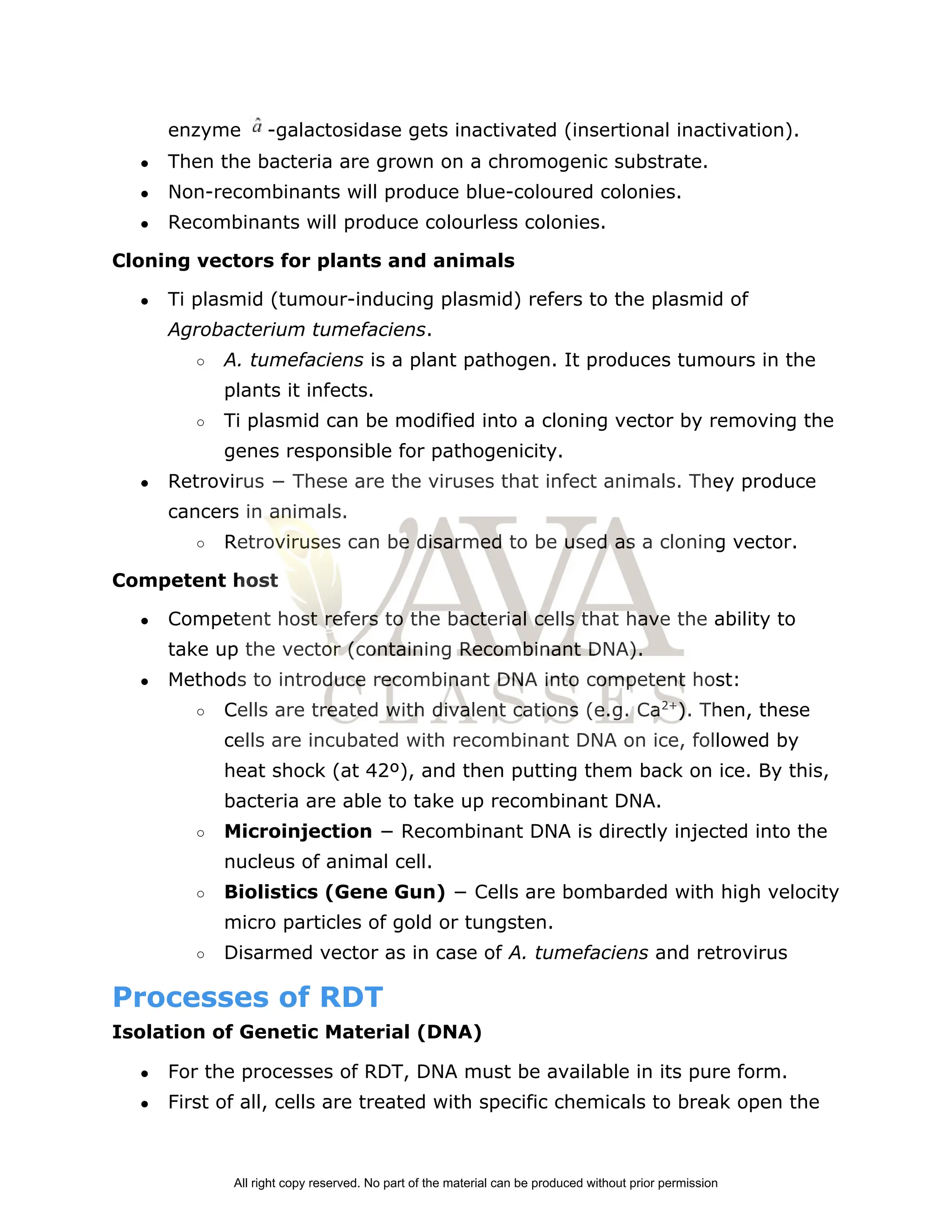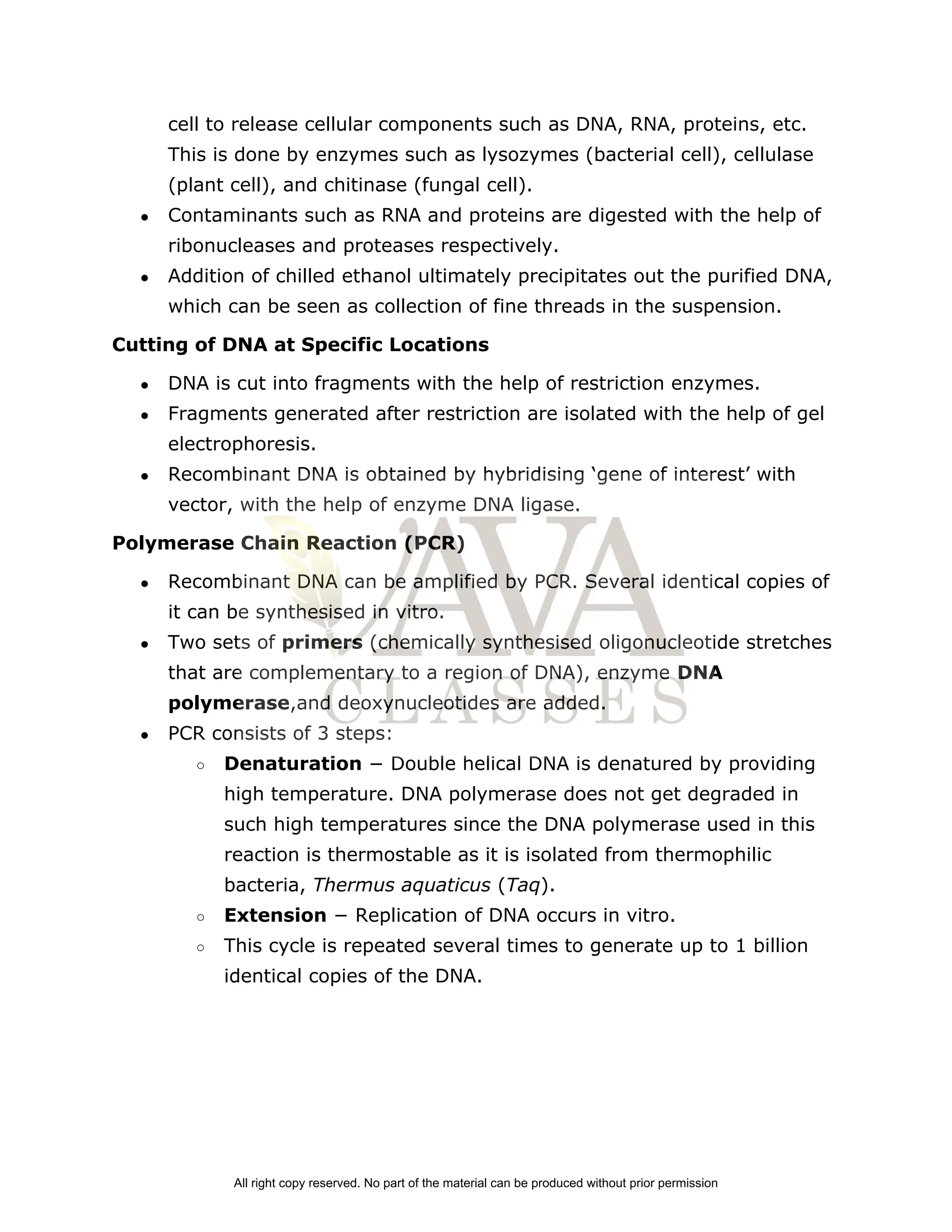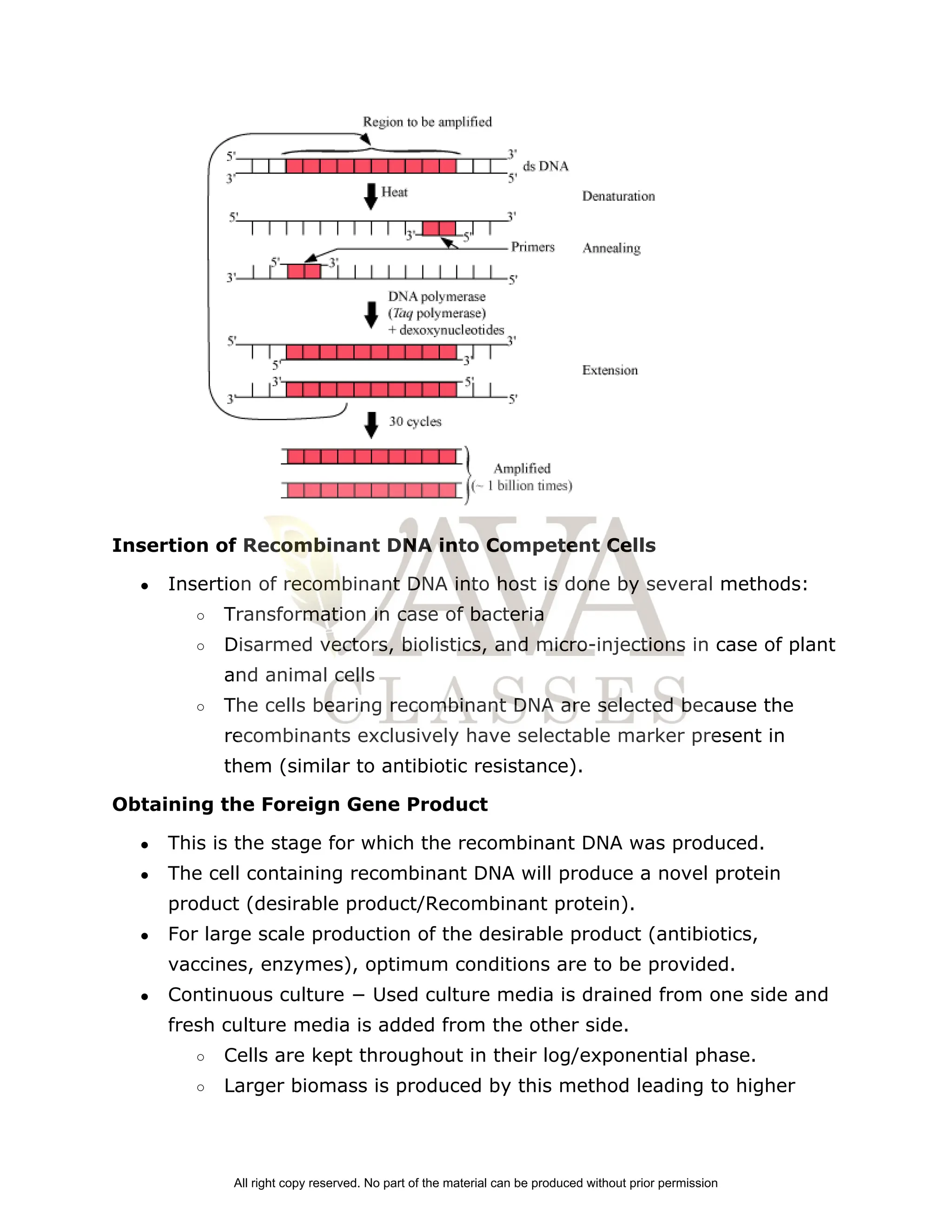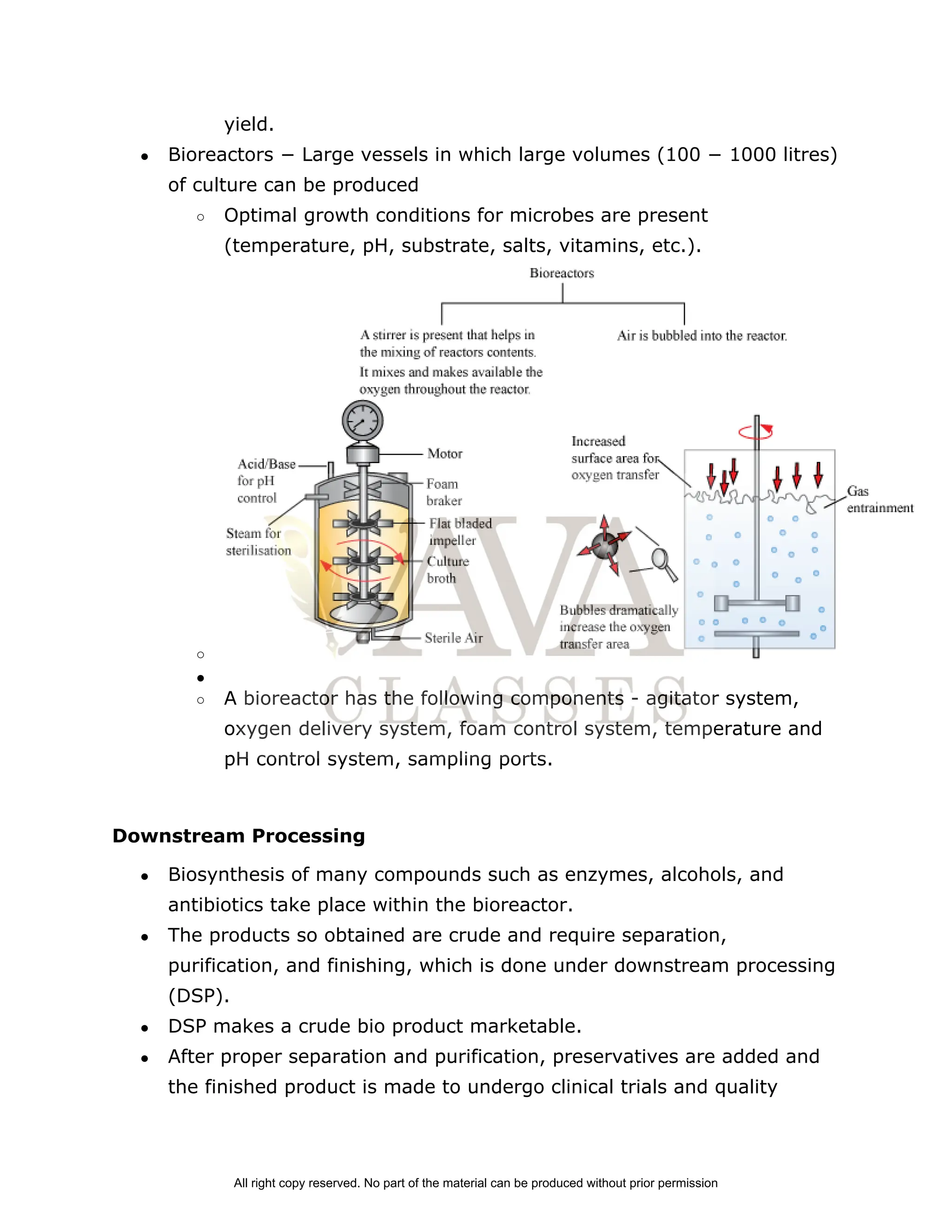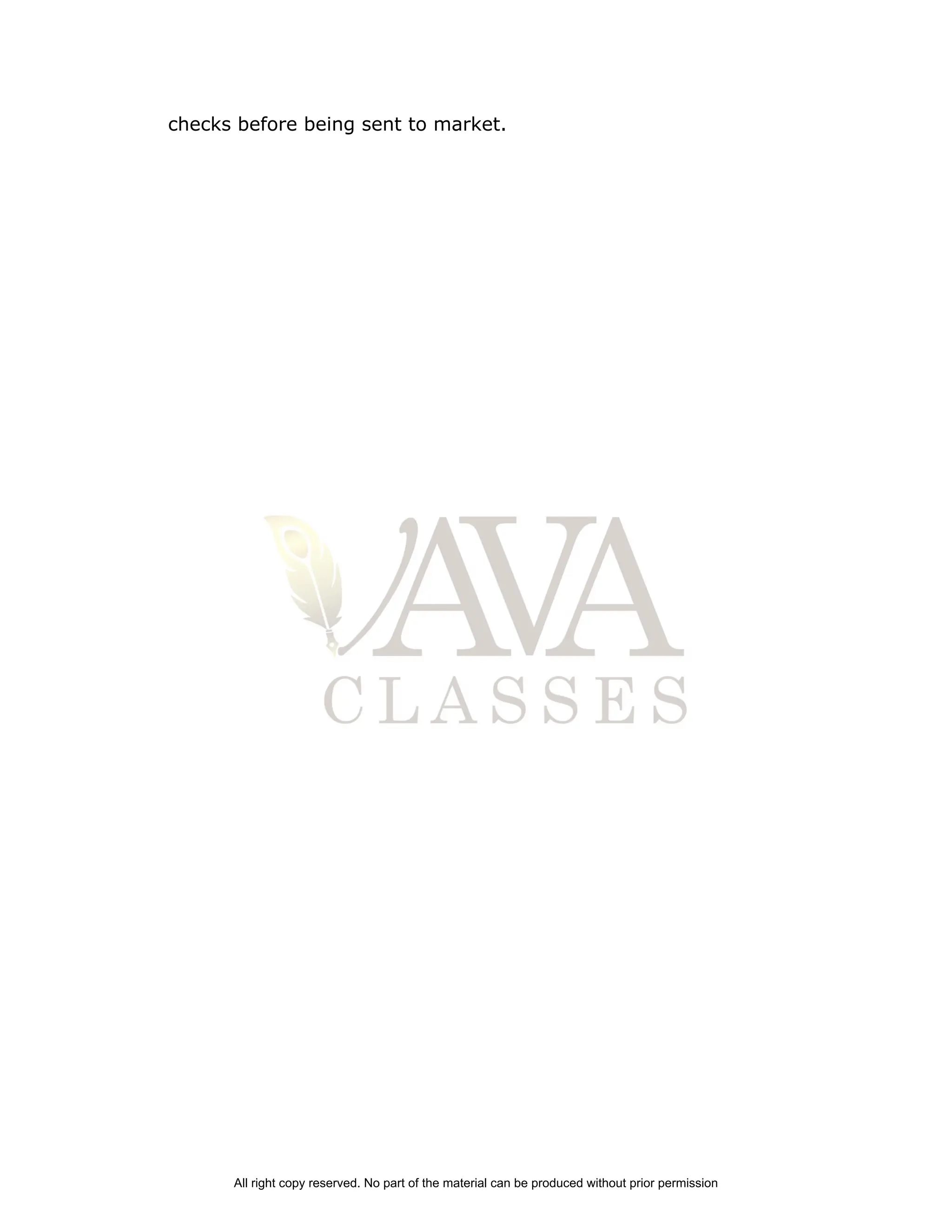Biotechnology utilizes biological processes for applications in agriculture, medicine, and environmental management, defined as the integration of natural science with living organisms by the European Federation of Biotechnology. Key techniques include genetic engineering for DNA manipulation and cloning, using vectors like plasmids and bacteriophages for gene transfer, and methods such as PCR for DNA amplification. The document covers processes from isolation and cutting of DNA using restriction enzymes to downstream processing for producing recombinant products.
